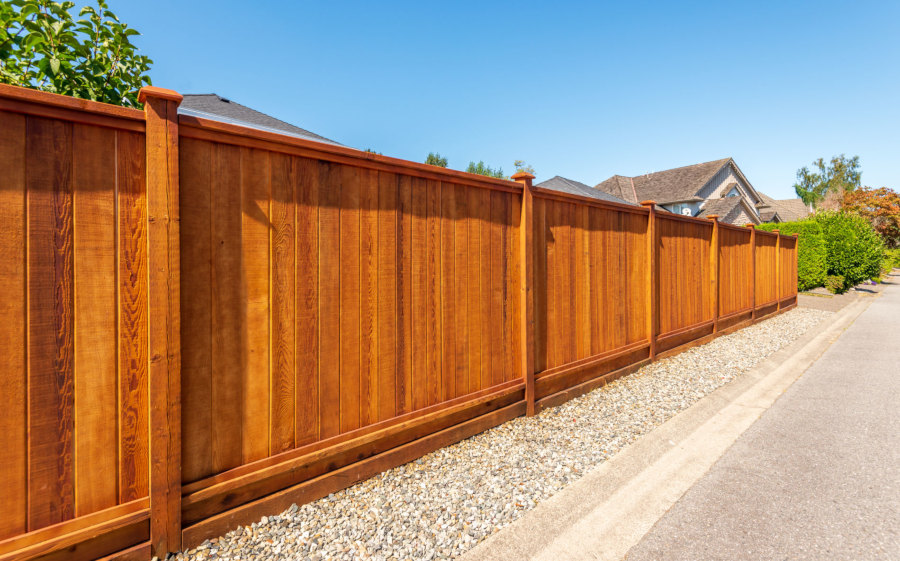Exactly How to Pick the Right Fencing Spot for Your Property
When it pertains to improving the look and longevity of your residential property's fencing, selecting the appropriate stain is a critical decision that needs careful factor to consider. With a myriad of alternatives available in the marketplace, each accommodating different wood kinds, shades, and openness levels, the procedure can rapidly come to be overwhelming. However, making an enlightened selection can significantly influence the total looks and longevity of your fence. Just how can you make certain that you select the excellent fence tarnish that lines up with your residential property's design and upkeep needs? Allow's explore some key elements to assist you in this decision-making procedure.
Understanding Wood Kind
To choose the appropriate fencing tarnish, it is vital to have a detailed understanding of the different sorts of timber typically used for fence. The selection of wood plays an important function in identifying the durability and overall aesthetics of the fence. Cedar is a prominent choice as a result of its natural resistance to decay and bugs, making it a resilient option for outside structures. Pine is one more usual wood utilized in fencing, recognized for its affordability and simplicity of staining. Yearn is extra prone to bending and decomposing compared to cedar. Redwood is a premium choice recognized for its striking appearance and natural longevity, though it includes a greater rate tag. When selecting a fence stain, it is essential to take into consideration the kind of wood being made use of to make certain compatibility and optimal defense. Comprehending the features of different wood kinds will certainly assist you make a notified choice when it involves choosing the appropriate fencing stain for your property - Fence Staining Nashville TN.
Selecting the Right Shade
Selecting a proper tone for your fencing discolor is an important decision that considerably impacts the total visual appeal of your residential property. The color you choose should complement the style of your home, mix sympathetically with the environments, and mirror your individual taste. When picking a shade, take into consideration the existing shade palette of your residential or commercial property. For a natural look, natural tones like browns, eco-friendlies, or grays work well. These shades can aid the fence mix into the landscape and develop a natural look. If you favor a more modern or bold look, think about choosing darker tones like black or deep charcoal for a striking contrast. Lighter shades such as whites or light grays can make a fence show up bigger and include a touch of beauty to your property. Eventually, the best color option will certainly enhance the elegance of your fence and boost the overall visual appeal of your home.

Considering Openness Degrees
When picking the best color for your fencing tarnish, one more important element to consider is the level of openness that will best fit your residential or commercial property's visual and upkeep requirements. Openness degrees in fence stains generally drop right into 3 categories: clear, semi-transparent, and solid. Think about the degree of direct exposure your fencing faces, the wanted maintenance frequency, and the aesthetic you want to achieve when choosing the ideal openness level for your fence stain.
Evaluating Upkeep Needs
Thinking about the durability and maintenance of your fencing, evaluating the maintenance demands is vital in establishing the most suitable fence stain for your home. The degree of upkeep required for your fencing can differ relying on elements such as the kind of wood, climate condition in your area, and your personal choices.
When examining maintenance requirements, it is important to think about the toughness of the fence tarnish. Some discolorations call for even more constant reapplication than others, so choosing a stain with a much longer life expectancy can aid decrease the overall upkeep demands of your fence (Fence Staining Service). Furthermore, factors such as resistance to UV rays, water, and mold can affect exactly how often you require to re-stain your fencing

Testing Examples Prior To Application
Prior to applying any fencing discolor, it is recommended to conduct example tests to make certain compatibility with the wood and desired aesthetic end result. Checking examples enables you to assess just how the stain will certainly engage with the certain type of timber used in your fencing, as different woods can take in stains in different ways. To begin, pick a little inconspicuous area of the fencing to apply the stain examples.
Conclusion
To conclude, selecting the appropriate fence discolor for your residential property involves comprehending the wood kind, choosing the ideal shade, thinking about transparency levels, examining maintenance demands, and screening samples prior to application (Fence read more Staining). By taking these aspects right into consideration, you can make sure that your fencing stain matches your property while offering the required security and durability. Make a notified choice to enhance the appearance and longevity of your fence